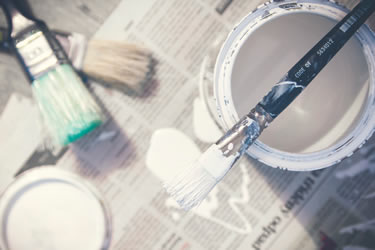Maintaining a clean and organised home is essential for creating a healthy and comfortable living environment. However, with the demands of modern life, finding time to clean can be challenging. That’s where house cleaning comes in. Whether you choose to clean your home yourself or hire professional services, a clean house promotes well-being, reduces stress, and enhances the overall aesthetics of your living space. In this article, we will explore the importance of house cleaning, provide useful tips and techniques, and answer some frequently asked questions to help you achieve a sparkling clean home.
The Importance of House Cleaning
- Health and Hygiene: Regular house cleaning helps eliminate dust, allergens, and bacteria, reducing the risk of respiratory problems and allergies.
- Mental Well-being: A clean and organized home promotes relaxation, reduces stress, and creates a peaceful atmosphere.
- Improved Productivity: A clutter-free environment allows you to focus better, leading to increased productivity in both work and personal life.
- Enhanced Safety: Regular cleaning ensures that hazardous materials are properly disposed of, reducing the risk of accidents or injuries.
- Longevity of Furniture and Appliances: Regular maintenance and cleaning extend the lifespan of your furniture, carpets, and appliances, saving you money in the long run.
Useful House Cleaning Tips
- Create a Cleaning Schedule: Establish a routine that includes daily, weekly, monthly, and seasonal cleaning tasks to ensure all areas of your home are covered.
- De-clutter Regularly: Sort through your belongings and get rid of items you no longer need. This reduces clutter and makes cleaning easier.
- Use the Right Tools: Invest in quality cleaning tools such as microfiber cloths, vacuum cleaners, mops, and dusters to achieve more effective and efficient cleaning results.
- Adopt Efficient Techniques: Clean from top to bottom, left to right, and tackle one room at a time. This helps to maintain consistency and prevents dirt from spreading.
- Choose Eco-friendly Cleaners: Opt for environmentally friendly cleaning products to minimize your exposure to harmful chemicals and reduce your ecological footprint.
- Pay Attention to Neglected Areas: Don’t forget to clean commonly overlooked areas such as baseboards, light fixtures, window tracks, and behind appliances.
- Delegate Tasks: If possible, involve other household members in the cleaning process by assigning specific tasks to each person. This helps distribute the workload and makes cleaning a team effort.
- Focus on Maintenance: Regularly maintain appliances, HVAC systems, and plumbing to prevent dirt buildup and ensure their optimal performance.
- Deep Clean Periodically: Set aside time for deep cleaning tasks like washing windows, shampooing carpets, and dusting hard-to-reach areas to maintain a high standard of cleanliness.
- Hire Professional Help: If you find it challenging to keep up with cleaning tasks or have a busy schedule, consider hiring professional cleaning services to ensure your home receives thorough attention.
FAQs (Frequently Asked Questions)
Q1. How often should I clean my house?
A: The frequency of cleaning depends on various factors such as household size, lifestyle, and personal preferences. Generally, daily maintenance tasks and regular weekly cleanings are recommended.
Q2. Can I use natural cleaning solutions?
A: Absolutely! Natural cleaning solutions like vinegar, baking soda, and lemon can be highly effective for many cleaning tasks and are safer alternatives to harsh chemicals.
Q3. How do I remove stubborn stains from mattresses?
A: Blot the stain immediately with a clean cloth or paper towel to absorb excess liquid. Then, use a carpet stain remover or a mixture of mild detergent and water to gently clean the area.
Q4. How can I make cleaning more enjoyable?
A: Put on your favorite music or podcast while cleaning, involve family members or friends, set achievable goals, and reward yourself after completing tasks to make the cleaning process more enjoyable.
Q5. Should I clean my house before or after a renovation?
A: It is generally recommended to clean your house after a renovation to remove construction dust and debris. However, it’s advisable to take necessary precautions and cover furniture and surfaces during the renovation process.
Q6. What is the best way to clean windows?
A: Mix water and vinegar or use a window cleaning solution. Apply the solution to the windows using a microfiber cloth or a squeegee, then wipe dry with a clean cloth or paper towel.
Q7. How can I prevent mold and mildew in the bathroom?
A: Regularly ventilate the bathroom by opening windows or using exhaust fans. Clean bathroom surfaces regularly, especially in areas prone to moisture, using mold and mildew cleaners.
Q8. Can professional cleaning services customize their offerings?
A: Yes, professional cleaning services often provide customizable packages based on your specific needs and budget. Discuss your requirements with the service provider to tailor the cleaning plan accordingly.
Q9. How long does it take to clean a house professionally?
A: The time required for professional house cleaning depends on factors such as the size of the house, the scope of cleaning, and the number of cleaners involved. A professional cleaning service can provide an estimate based on your specific circumstances.
Q10. Is it necessary to clean areas that are not visible, like the attic or basement?
A: While regular cleaning of visible areas is essential, it’s also important to periodically clean less visible areas like the attic and basement to prevent dust accumulation, pest infestation, and maintain overall cleanliness.
Maintaining a clean home goes beyond aesthetics; it promotes a healthy, safe, and pleasant living environment. By implementing the tips and techniques mentioned in this article, you can simplify the cleaning process and achieve a sparkling clean home. Remember, consistency is key, and if needed, don’t hesitate to seek professional help to ensure your house remains in tip-top condition. Embrace the benefits of a clean home and enjoy the peace of mind that comes with it.
 Keep a Brush Storage Bucket Nearby
Keep a Brush Storage Bucket Nearby Painting a Room
Painting a Room Have you ever finished
Have you ever finished